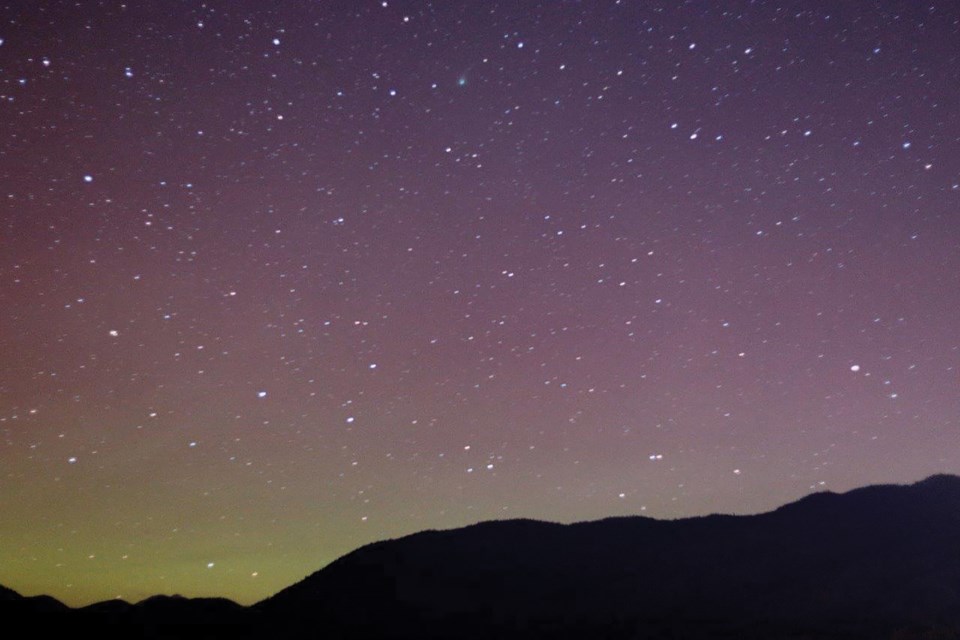“Do you want to see a comet?”
With apologies to the songwriters of Frozen.
First, there will be a conjunction of the moon and Uranus in the evening of Jan. 28. Uranus should be visible in binoculars about half a moon diameter to the lower left of the moon and along the line of the first quarter terminator with the best alignment about 20:00.
Next, we get to see another conjunction – the moon and Mars – two days later on Jan. 30. No binocs required, same time: 20:00.
Another cool conjunction occurs Feb. 22 at sunset in the west. At 18:00, Venus will be about 20 degrees above the WSW horizon; about four degrees above and to the left will be a thin new moon with Jupiter to its right. Yet another conjunction occurs on what would be Feb. 29 – if this were a leap year – at about 19:00. By March 1, Venus has moved alongside Jupiter and the two will be about half a degree apart – the width of the moon. With a steady pair of binoculars, you’ll be able to see the two planets and Jupiter’s four moons, all of them strung out to its upper left and everything in the same field of view. You don’t see that every day!
So, back to the lede; we have a comet in our skies! Comet C/2022 E3 ZTF was discovered in March 2022 and the name suffix refers to the Zwicky Transient Facility that found it. According to NASA, “the ZTF Observing System delivers efficient, high-cadence, wide-field-of-view, multi-band optical imagery for time-domain astrophysics analysis. It is installed on the 48-inch Samuel Oschin Telescope (Schmidt-type) at the Palomar Observatory.” Well, I can say I knew what the Palomar Observatory was.
According to its discoverers and the Jet Propulsion Laboratory, this is a long-period comet and probably on its first pass through the solar system. I assume this means it has a fairly high velocity, appropriate to something falling in from the Oort Cloud, the shell of remnant ice and dust fragments that was left after the gravitational infall that led to our solar system. Think of a fraction of a lightyear or so. What this likely means is that this matter has never been exposed to solar radiation and the volatiles in its makeup will be boiled off back into space, which will make for a nice showy tail. While ZFT isn’t likely to be as spectacular as Comet Neowise was in 2020 (that one was truly awesome) it’s still very neat to see with your own eyes something that’s been chilling around since the sun was formed!
More information on what we know about this comet can be found at:
- Heavens Above (good finder chart specific to Sechelt)
- Astronomy Picture of the Day
- Wikipedia (this one includes a great finder chart that shows the comet’s position tracking between the Big and Little Dippers. Just mentally rotate the image 120 degrees counter-clockwise to orient it to 20:00 – evening).
Although winter weather on the Sunshine Coast isn’t exactly conducive to viewing anything astronomical (to put it politely), we do appear to have a possible window coming up. The Environment Canada weather oracles forecast clear and cold weather starting Jan. 27. If true, we’ve got a shot at seeing this comet.
Just remember, as one noted astronomer said: “Comets are like cats; they have a tail and do whatever the heck they want.”
The February club meeting open to the public will be at the Sechelt Library at 7 p.m. Feb. 10. Although the presentation is as yet to be determined; updates will be posted at the Sunshine Coast Club website at: https://sunshinecoastastronomy.wordpress.com/. We hope to see you there.


